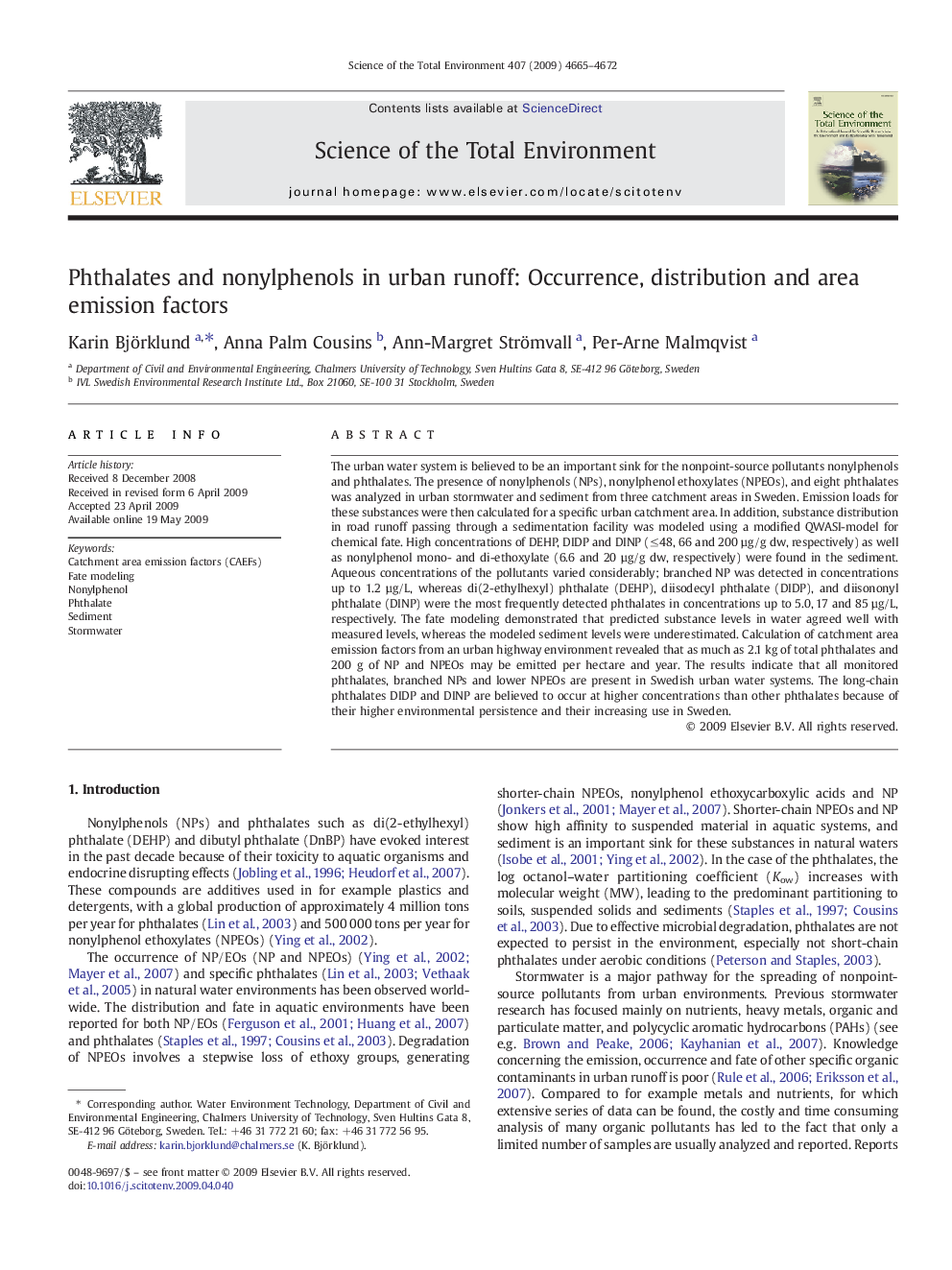| Article ID | Journal | Published Year | Pages | File Type |
|---|---|---|---|---|
| 4431259 | Science of The Total Environment | 2009 | 8 Pages |
The urban water system is believed to be an important sink for the nonpoint-source pollutants nonylphenols and phthalates. The presence of nonylphenols (NPs), nonylphenol ethoxylates (NPEOs), and eight phthalates was analyzed in urban stormwater and sediment from three catchment areas in Sweden. Emission loads for these substances were then calculated for a specific urban catchment area. In addition, substance distribution in road runoff passing through a sedimentation facility was modeled using a modified QWASI-model for chemical fate. High concentrations of DEHP, DIDP and DINP (≤ 48, 66 and 200 µg/g dw, respectively) as well as nonylphenol mono- and di-ethoxylate (6.6 and 20 µg/g dw, respectively) were found in the sediment. Aqueous concentrations of the pollutants varied considerably; branched NP was detected in concentrations up to 1.2 µg/L, whereas di(2-ethylhexyl) phthalate (DEHP), diisodecyl phthalate (DIDP), and diisononyl phthalate (DINP) were the most frequently detected phthalates in concentrations up to 5.0, 17 and 85 µg/L, respectively. The fate modeling demonstrated that predicted substance levels in water agreed well with measured levels, whereas the modeled sediment levels were underestimated. Calculation of catchment area emission factors from an urban highway environment revealed that as much as 2.1 kg of total phthalates and 200 g of NP and NPEOs may be emitted per hectare and year. The results indicate that all monitored phthalates, branched NPs and lower NPEOs are present in Swedish urban water systems. The long-chain phthalates DIDP and DINP are believed to occur at higher concentrations than other phthalates because of their higher environmental persistence and their increasing use in Sweden.
